International School of Crystallography - Erice

Ettore Majorana Foundation and Centre for Scientific Culture
President: Professor Antonino Zichichi
INTERNATIONAL SCHOOL of CRYSTALLOGRAPHY
Director: Sir Tom Blundell, FRS FMedSci
Cookies help us deliver our Services. By using our Services or clicking I agree, you agree to our use of cookies.
I agree cookie policy
Ettore Majorana Foundation and Centre for Scientific Culture
President: Professor Antonino Zichichi
Director: Sir Tom Blundell, FRS FMedSci

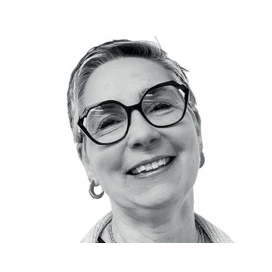
NanoImaging Services, Woburn, MA, USA
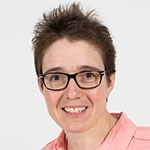
Oxford University, UK

Diamond and Oxford University, UK
The past two years have been transformational in showing how the medical and scientific communities can respond to acute health threats: the worldwide collaboration of scientists from all fields of biology, chemistry and structural sciences delivered results at previously unseen speed. Nevertheless, understanding and managing all aspects of human health remains one of society’s biggest challenges, and this in turn requires a robust understanding, currently still highly incomplete, of the underlying biology and healthy and diseased states. Structural information illuminates and accelerates all aspects of this drug design process, but the focus has remained decisively on the earlier stages, to providing tools for the understanding of the disease biology. Moreover, traditional structural biology techniques have now been thoroughly integrated with other disciplines, including biophysics, informatics, biology and chemistry. This continuous evolution means that success of the entire process depends on proper management of the increasing complexity, diversity and volume of data generated.
The purpose of the course is to provide the students with: a) an overview of the current structural and biophysical techniques used in the field; b) the use of informatics tools in drug discovery; c) the evolving role of chemistry in drug design and biology understanding; and d) an introduction to biologics and their applications. Several case studies will be presented to highlight the different topics. Hands-on workshops and tutorials will complement the lectures.

E. ARNOLD
Rutgers University, Piscataway, NJ, USA
 Eddy Arnold, Board of Governors and Distinguished Professor of Chemistry and Chemical Biology at Rutgers University, works to understand the structural and molecular basis of the chemistry underlying life, with a focus on studying human disease problems and applying the insights gained to the development of better treatments. His research has profoundly influenced our understanding of the structure and biological function of viruses and their components, and his structure-guided efforts have yielded five therapeutic medicines for treating HIV/AIDS. The cross-disciplinary research in Arnold’s group uses a broad swath of tools and techniques from molecular biology, protein chemistry and biochemistry, biophysics, virology, crystallography, and cryo-EM.
Eddy studied chemistry and organic chemistry at Cornell as an undergraduate and Ph.D. student. His postdoctoral work in Michael Rossmann’s laboratory culminated in elucidating the structure of a common cold virus (1985), the first animal virus described in complete atomic detail. His work has illuminated fundamental molecular mechanisms of viral polymerase structure and function, infection and escape from antiviral drugs and immune surveillance, and protein-nucleic acid and protein-ligand interactions.
Eddy began his faculty career at Rutgers in 1987 with a focus on using crystallography to help discover drugs for treating HIV infection, which at the time was a death sentence. Eddy’s structure of HIV reverse transcriptase complexed with DNA (1993), the first polymerase visualized with a relevant substrate, changed the landscape of the HIV/AIDS and polymerase biochemistry fields. His longstanding collaboration with Stephen Hughes has resulted in extraordinarily diverse and innovative studies of HIV reverse transcriptase structure, function, inhibition, and resistance that have helped to make this critical enzyme the most thoroughly understood of any DNA polymerase.
Arnold’s efforts with legendary drug developer Dr. Paul Janssen, enabled the design and discovery of five anti-AIDS drugs (etravirine, rilpivirine, Complera, Odefsey, and Juluca) that are broadly used for treating HIV-infected patients and are resilient to drug resistance. Arnold’s team developed the strategic flexibility hypothesis, which postulates that structural flexibility and compactness of inhibitors can overcome resistance mutations, a concept that can be applied to any disease target. His elegant analyses of RT drug inhibition and resistance mechanisms have likewise spawned generalizable principles. Crystallographic fragment screening efforts identified novel allosteric inhibitory sites in HIV-1 reverse transcriptase and led to new classes of antiviral inhibitors targeting influenza virus endonuclease and HIV-1 integrase.
Publication list: https://scholar.google.com/citations?user=3ALJe7MAAAAJ
Eddy Arnold, Board of Governors and Distinguished Professor of Chemistry and Chemical Biology at Rutgers University, works to understand the structural and molecular basis of the chemistry underlying life, with a focus on studying human disease problems and applying the insights gained to the development of better treatments. His research has profoundly influenced our understanding of the structure and biological function of viruses and their components, and his structure-guided efforts have yielded five therapeutic medicines for treating HIV/AIDS. The cross-disciplinary research in Arnold’s group uses a broad swath of tools and techniques from molecular biology, protein chemistry and biochemistry, biophysics, virology, crystallography, and cryo-EM.
Eddy studied chemistry and organic chemistry at Cornell as an undergraduate and Ph.D. student. His postdoctoral work in Michael Rossmann’s laboratory culminated in elucidating the structure of a common cold virus (1985), the first animal virus described in complete atomic detail. His work has illuminated fundamental molecular mechanisms of viral polymerase structure and function, infection and escape from antiviral drugs and immune surveillance, and protein-nucleic acid and protein-ligand interactions.
Eddy began his faculty career at Rutgers in 1987 with a focus on using crystallography to help discover drugs for treating HIV infection, which at the time was a death sentence. Eddy’s structure of HIV reverse transcriptase complexed with DNA (1993), the first polymerase visualized with a relevant substrate, changed the landscape of the HIV/AIDS and polymerase biochemistry fields. His longstanding collaboration with Stephen Hughes has resulted in extraordinarily diverse and innovative studies of HIV reverse transcriptase structure, function, inhibition, and resistance that have helped to make this critical enzyme the most thoroughly understood of any DNA polymerase.
Arnold’s efforts with legendary drug developer Dr. Paul Janssen, enabled the design and discovery of five anti-AIDS drugs (etravirine, rilpivirine, Complera, Odefsey, and Juluca) that are broadly used for treating HIV-infected patients and are resilient to drug resistance. Arnold’s team developed the strategic flexibility hypothesis, which postulates that structural flexibility and compactness of inhibitors can overcome resistance mutations, a concept that can be applied to any disease target. His elegant analyses of RT drug inhibition and resistance mechanisms have likewise spawned generalizable principles. Crystallographic fragment screening efforts identified novel allosteric inhibitory sites in HIV-1 reverse transcriptase and led to new classes of antiviral inhibitors targeting influenza virus endonuclease and HIV-1 integrase.
Publication list: https://scholar.google.com/citations?user=3ALJe7MAAAAJ
Website: https://cabm.rutgers.edu/faculty_and_research/arnold.php

T. BLUNDELL
Department of Biochemistry at Cambridge, UK
 Tom Blundell is Director of Research in the Department of Biochemistry, University of Cambridge, where he was previously Sir William Dunn Professor and Chair of School of Biological Sciences between 2003 and 2009. He has previously held positions in the Universities of London, Sussex and Oxford. Tom began his research career in Oxford, working with Nobel Laureate Dorothy Hodgkin on the first structure of a protein hormone, insulin. He has made major breakthroughs on the structural and computational biology and biophysics of hormones and growth factors (insulin, glucagon, NGF, HGF, FGF), receptor activation, signal transduction and DNA repair, important in cancer, tuberculosis and familial diseases. He has produced many widely used software packages for protein modelling and design, including Modeller (~10,500 citations) and Fugue (~1200 citations), and for predicting effects of mutations on protein stability and interactions (SDM & mCSM), to understand cancer & drug resistance. He has published ~630 research papers, including ~40 in Nature and Science, and has an H-factor of 114.
Tom Blundell is Director of Research in the Department of Biochemistry, University of Cambridge, where he was previously Sir William Dunn Professor and Chair of School of Biological Sciences between 2003 and 2009. He has previously held positions in the Universities of London, Sussex and Oxford. Tom began his research career in Oxford, working with Nobel Laureate Dorothy Hodgkin on the first structure of a protein hormone, insulin. He has made major breakthroughs on the structural and computational biology and biophysics of hormones and growth factors (insulin, glucagon, NGF, HGF, FGF), receptor activation, signal transduction and DNA repair, important in cancer, tuberculosis and familial diseases. He has produced many widely used software packages for protein modelling and design, including Modeller (~10,500 citations) and Fugue (~1200 citations), and for predicting effects of mutations on protein stability and interactions (SDM & mCSM), to understand cancer & drug resistance. He has published ~630 research papers, including ~40 in Nature and Science, and has an H-factor of 114.
Tom has developed new approaches to structure-guided and fragment-based drug discovery. In 1999 he co-founded Astex Therapeutics, an oncology company that has eight drugs in clinical trials and that was sold in 2013 as Astex Pharma to Otsuka for $886 million. In parallel in the University of Cambridge he has developed structure-guided fragment-based approaches to drug discovery for difficult targets involving multiprotein systems and protein-protein interactions. He has also been targeting Mycobacterium tuberculosis proteins as part of the Gates HIT-TB consortia, M leprae for American Leprosy Mission and M. abscessus for Cystic Fibrosis Trust, including structural and biochemical studies of resistance mutations to first-line drugs.
Tom was a member of PM Margaret Thatcher’s Advisory Council on Science & Technology (1988-1990), Founding CEO of Biotechnology and Biological Sciences Research Council, 1991-1996 (Chair 2009-2015), Chairman, Royal Commission on Environment (1998-2005), Deputy Chair of Institute of Cancer Research 2008-2015 and President of UK Science Council, 2011- 2016.

A. BRADLEY
Exscientia, Oxford, UK
 Dr. Bradley is multi-disciplinary scientist in computer-aided compound design using
structural data. He completed a first-class MChem in Chemistry from the University of
Oxford in 2010. He carried out an interdisciplinary DPhil also at the University of Oxford on
the SABS-IDC programme. During this he developed computational tools (OOMMPPAA and
WONKA) for structure-based drug design - lead by the SGC Oxford (Brian Marsden) and
GlaxoSmithKline (Ian Wall and Darren Green) and the University of Oxford (Charlotte
Deane).
Dr. Bradley is multi-disciplinary scientist in computer-aided compound design using
structural data. He completed a first-class MChem in Chemistry from the University of
Oxford in 2010. He carried out an interdisciplinary DPhil also at the University of Oxford on
the SABS-IDC programme. During this he developed computational tools (OOMMPPAA and
WONKA) for structure-based drug design - lead by the SGC Oxford (Brian Marsden) and
GlaxoSmithKline (Ian Wall and Darren Green) and the University of Oxford (Charlotte
Deane).
Subsequent to his DPhil he carried out a post-doc at the RCSB PDB (UC San Diego) where
he worked on novel compression algorithms for macromolecules, including the MMTF file
format (http://mmtf.rcsb.org/). He then worked as a Project Leader between the Oxford
Chemistry department, Diamond Light Source and the SGC Oxford on the XChem project
(High-throughput X-ray screening of fragments). Here he generated tools
(https://fragalysis.diamond.ac.uk/) and future funding for fragment-based compound
optimisation leveraging the XChem platform. Since October 2018 he has worked at
Exscientia, as Head of Design Sciences, where he leverages Exscientia’s Centaur
Platform for compound design and develops novel methods that will further improve the
platform.

R. BUICK
Fusionantibodies, Belfast, IR
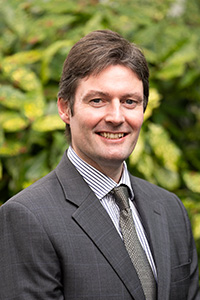 Chief Scientific Officer, Fusion Antibodies plc
Chief Scientific Officer, Fusion Antibodies plc
Richard Buick has worked in the biotechnology industry since 1998. He holds a 1st Class Honours degree in Genetics and a PhD in Immunology. He spent 4 years discovering novel antibodies from synthetic libraries before joining Fusion Antibodies in 2002, where he has been responsible for the development of Fusion’s CDRx Humanisation and RAMP affinity maturation platforms, and is currently leading the development of a novel mammalian display platform.

M. CONGREVE
Isomorphic Labs, London, UK
 Miles is Isomorphic Labs' Chief Scientific Officier. He has helped design 20 clinically evaluated drugs and is co-inventor of Kisqali® (Ribociclib), a marketed treatment for breast cancers.
As Chief Scientific Officer at Sosei Heptares, Miles pioneered Structure-Based Drug Design for G Protein-Coupled Receptors (GPCRs). As
Director of Chemistry at Astex Pharmaceuticals, he helped establishFragment-Based Drug Design as a radical newapproach to small molecule lead generation. He has also been a team leader at GlaxoSmithKline in medicinal chemistry and chemical technologies.
He is co-author of over 200 publications and patents and a fellow of the Royal Society of Chemistry. In 2015, he was co-recipient of the
SC Malcolm Campbell Memorial Prize for the seminal contributions to GPCR drug discovery made by Sosei Heptares.
Miles has a degree in biological chemistry from Leicester University and a PhD in synthetic chemistry from Cambridge University.
Miles is Isomorphic Labs' Chief Scientific Officier. He has helped design 20 clinically evaluated drugs and is co-inventor of Kisqali® (Ribociclib), a marketed treatment for breast cancers.
As Chief Scientific Officer at Sosei Heptares, Miles pioneered Structure-Based Drug Design for G Protein-Coupled Receptors (GPCRs). As
Director of Chemistry at Astex Pharmaceuticals, he helped establishFragment-Based Drug Design as a radical newapproach to small molecule lead generation. He has also been a team leader at GlaxoSmithKline in medicinal chemistry and chemical technologies.
He is co-author of over 200 publications and patents and a fellow of the Royal Society of Chemistry. In 2015, he was co-recipient of the
SC Malcolm Campbell Memorial Prize for the seminal contributions to GPCR drug discovery made by Sosei Heptares.
Miles has a degree in biological chemistry from Leicester University and a PhD in synthetic chemistry from Cambridge University.

E. DAVIS
Schrödinger, New York, USA
 Erin Davis joined Schrödinger in 2016. She is responsible for the business, science, and development of Schrödinger's enterprise informatics platform LiveDesign, and has overseen its explosive growth across global pharma. In addition, she leads the Discovery Informatics team to support Schrödinger's plethora of collaborative and wholly owned drug discovery programs. Prior to joining Schrödinger, Erin held several leadership positions including Head of US Consulting for ChemAxon and Scientific Relations Manager for the Cambridge Crystallographic Data Centre. Before moving to industry, she spent several years in academia researching neurochemical and antimicrobial drug design, leading to many publications and one patent. Erin earned a PhD from the University of Montana in 2006 with a focus on the computational design of CNS compounds.
Erin Davis joined Schrödinger in 2016. She is responsible for the business, science, and development of Schrödinger's enterprise informatics platform LiveDesign, and has overseen its explosive growth across global pharma. In addition, she leads the Discovery Informatics team to support Schrödinger's plethora of collaborative and wholly owned drug discovery programs. Prior to joining Schrödinger, Erin held several leadership positions including Head of US Consulting for ChemAxon and Scientific Relations Manager for the Cambridge Crystallographic Data Centre. Before moving to industry, she spent several years in academia researching neurochemical and antimicrobial drug design, leading to many publications and one patent. Erin earned a PhD from the University of Montana in 2006 with a focus on the computational design of CNS compounds.

M. FISCHER
St. Jude Children's Research Hospital, Memphis, TN
 Marcus Fischer discovered his passion for structural biology during his undergraduate studies in the beautiful Hanseatic city of Lübeck (Germany). During his B.Sc. & M.Sc. studies he conducted research projects in Montpellier (France), Shanghai (China), and Toronto (Canada). He received a Ph.D. in Structural Biology and Chemistry from the University of York (UK) where he worked with Rod Hubbard on fragment-based ligand discovery. During his postdoc with Brian Shoichet in San Francisco (USA), he traded fog for glacial winter temperatures during a “sabbatical” year in Toronto. It remains unconfirmed whether the Toronto winter made him question cryogenic practices in crystallography. His postdoctoral work used model proteins to isolate important terms for computational ligand discovery, especially protein flexibility and solvation. In July 2017 he joined the faculty of St. Jude Children’s Research Hospital as an Assistant Professor. Combining an interest in chemical and structural biology, his lab is exploiting protein conformational landscapes for ligand discovery with an emphasis in pediatric cancer. https://www.stjude.org/research/labs/fischer-lab.html
Marcus Fischer discovered his passion for structural biology during his undergraduate studies in the beautiful Hanseatic city of Lübeck (Germany). During his B.Sc. & M.Sc. studies he conducted research projects in Montpellier (France), Shanghai (China), and Toronto (Canada). He received a Ph.D. in Structural Biology and Chemistry from the University of York (UK) where he worked with Rod Hubbard on fragment-based ligand discovery. During his postdoc with Brian Shoichet in San Francisco (USA), he traded fog for glacial winter temperatures during a “sabbatical” year in Toronto. It remains unconfirmed whether the Toronto winter made him question cryogenic practices in crystallography. His postdoctoral work used model proteins to isolate important terms for computational ligand discovery, especially protein flexibility and solvation. In July 2017 he joined the faculty of St. Jude Children’s Research Hospital as an Assistant Professor. Combining an interest in chemical and structural biology, his lab is exploiting protein conformational landscapes for ligand discovery with an emphasis in pediatric cancer. https://www.stjude.org/research/labs/fischer-lab.html

S.J. FLEISHMAN
Weizmann Institute of Science, Rehovot, IL
 Dr. Sarel Fleishman is an assistant professor at the Weizmann Institute of Science, where his research team develops computational protein-design methodology to address challenges in biochemistry and protein engineering. As a postdoc with David Baker in Seattle (2007-2011), Sarel developed the first accurate methods for designing protein binders, culminating in the design of broad-specificity influenza inhibitors. At the Weizmann Institute (2011-), his team developed protein design methods to the level of accuracy and reliability required to design large and complex proteins such as enzymes, antibodies, and vaccine immunogens. The team recently developed a fully automated method, called PROSS, for dramatically improving the stability and expressibility of recalcitrant proteins and several design methods for improving affinity, specificity, and catalytic rates in antibodies and enzymes. Current focuses include developing methods for designing large repertoires comprising millions of enzymes or antibodies for one-shot isolation of highly active, specific, and stable binders, inhibitors, or enzymes. Among Sarel’s academic awards were the Clore Ph.D. Fellowship (2003-2006), the ScienceMagazine award for a young molecular biologist (2008), a postdoctoral fellowship (2006-2009) and a career-development award (2012-2015) from the Human Frontier Science Program, European Research Council Starting and Consolidator Grants (ongoing), the Alon Fellowship, the Henri Gutwirth Prize, and the Weizmann Scientific Council Award.
Dr. Sarel Fleishman is an assistant professor at the Weizmann Institute of Science, where his research team develops computational protein-design methodology to address challenges in biochemistry and protein engineering. As a postdoc with David Baker in Seattle (2007-2011), Sarel developed the first accurate methods for designing protein binders, culminating in the design of broad-specificity influenza inhibitors. At the Weizmann Institute (2011-), his team developed protein design methods to the level of accuracy and reliability required to design large and complex proteins such as enzymes, antibodies, and vaccine immunogens. The team recently developed a fully automated method, called PROSS, for dramatically improving the stability and expressibility of recalcitrant proteins and several design methods for improving affinity, specificity, and catalytic rates in antibodies and enzymes. Current focuses include developing methods for designing large repertoires comprising millions of enzymes or antibodies for one-shot isolation of highly active, specific, and stable binders, inhibitors, or enzymes. Among Sarel’s academic awards were the Clore Ph.D. Fellowship (2003-2006), the ScienceMagazine award for a young molecular biologist (2008), a postdoctoral fellowship (2006-2009) and a career-development award (2012-2015) from the Human Frontier Science Program, European Research Council Starting and Consolidator Grants (ongoing), the Alon Fellowship, the Henri Gutwirth Prize, and the Weizmann Scientific Council Award.
J. FRASER
UCSF, San Francisco, CA, USA
Withdrawn March 2023
 James Fraser was an undergraduate at McGill University in Montreal,
Canada. He moved to California in 2005 for his PhD in Molecular and
Cellular Biology at UC Berkeley. There, he worked with Tom Alber
creating biophysical methods to characterize protein side chain
flexibility in high resolution X-ray electron density maps to reveal
the structural basis for critical functional motions in enzymes. Near
the end of his PhD, he was an EMBO Visiting Short-Term Fellow in Dan
Tawfik’s lab at the Weizmann Institute in Israel. Concurrently, he
authored the problems and solutions manual for the physical chemistry
textbook The Molecules of Life by John Kuriyan, Boyana Konforti, and
David Wemmer. In 2011, James started his independent career as a UCSF.
He is currently an Associate Professor in the Dept. of Bioengineering
and Therapeutic Sciences. He is also a Consulting Professor in Photon
Science at the Stanford SLAC National Laboratory and a Faculty
Scientist at Lawrence Berkeley National Lab. The long-term goals of
his lab's research program are to understand how protein
conformational ensembles are reshaped by perturbations and to quantify
how these perturbations impact protein function and organismal
fitness. James is a recipient of the NIH Early Independence Award, a
Pew Scholar Award, a Searle Scholar Award, and a Packard Fellowship.
He is an ardent supporter of open science and publishing practices,
primarily through the preprint advocacy group ASAPbio.
James Fraser was an undergraduate at McGill University in Montreal,
Canada. He moved to California in 2005 for his PhD in Molecular and
Cellular Biology at UC Berkeley. There, he worked with Tom Alber
creating biophysical methods to characterize protein side chain
flexibility in high resolution X-ray electron density maps to reveal
the structural basis for critical functional motions in enzymes. Near
the end of his PhD, he was an EMBO Visiting Short-Term Fellow in Dan
Tawfik’s lab at the Weizmann Institute in Israel. Concurrently, he
authored the problems and solutions manual for the physical chemistry
textbook The Molecules of Life by John Kuriyan, Boyana Konforti, and
David Wemmer. In 2011, James started his independent career as a UCSF.
He is currently an Associate Professor in the Dept. of Bioengineering
and Therapeutic Sciences. He is also a Consulting Professor in Photon
Science at the Stanford SLAC National Laboratory and a Faculty
Scientist at Lawrence Berkeley National Lab. The long-term goals of
his lab's research program are to understand how protein
conformational ensembles are reshaped by perturbations and to quantify
how these perturbations impact protein function and organismal
fitness. James is a recipient of the NIH Early Independence Award, a
Pew Scholar Award, a Searle Scholar Award, and a Packard Fellowship.
He is an ardent supporter of open science and publishing practices,
primarily through the preprint advocacy group ASAPbio.

S. JACOB
Novartis, Basel, CH
 Sandra Jacob is executive director and head of Protein Sciences in the Chemical Biology and Therapeutics department of the Novartis Institutes for BioMedical Research in Basel, Switzerland. Her group works mainly in hit/lead discovery and optimization doing protein production of soluble and membrane proteins and using X-ray, EM, NMR and other biophysical methods to find and characterize interactions of ligands with proteins and RNA. Sandra is recognized for her expertise in kinase inhibition and her work has resulted in the discovery of Tasigna, a drug for the treatment of Chronic Myelogenous Leukemia. She is a driver of novel approaches for target modulation, the most recent examples being non-ATP site inhibitors of kinases. She studied Chemistry at the University of Melbourne in Australia and followed this up with a Ph.D. using protein crystallography at the St. Vincent’s Institute of Medical research in Melbourne. She joined Ciba Geigy, now Novartis, after studies including lipocalins at Uppsala University in Sweden and focusing on membrane proteins at the University of Basel.
Sandra Jacob is executive director and head of Protein Sciences in the Chemical Biology and Therapeutics department of the Novartis Institutes for BioMedical Research in Basel, Switzerland. Her group works mainly in hit/lead discovery and optimization doing protein production of soluble and membrane proteins and using X-ray, EM, NMR and other biophysical methods to find and characterize interactions of ligands with proteins and RNA. Sandra is recognized for her expertise in kinase inhibition and her work has resulted in the discovery of Tasigna, a drug for the treatment of Chronic Myelogenous Leukemia. She is a driver of novel approaches for target modulation, the most recent examples being non-ATP site inhibitors of kinases. She studied Chemistry at the University of Melbourne in Australia and followed this up with a Ph.D. using protein crystallography at the St. Vincent’s Institute of Medical research in Melbourne. She joined Ciba Geigy, now Novartis, after studies including lipocalins at Uppsala University in Sweden and focusing on membrane proteins at the University of Basel.
A. KOTECHA
Thermo Fisher Scientific

 Abhay Kotecha is applications development manager at Thermo Fisher Scientific. His work focuses on developing application strategies with cryo-EM high resolution single particle analysis to cryo-ET for molecular cellular structure biology. Abhay received his PhD in Structural Biology at the University of Oxford working on structure-based drugs and vaccine design for Picornaviruses using high resolution X-ray crystallography and cryo-EM. He spent further time at Oxford as a post-doc continuing to a position as Senior Research Scientist. Abhay has been with Thermo Fisher Scientific for over four years and leads a team of scientists within the Life Sciences Business Unit at Thermo Fisher Scientific’s Material and Structural analysis division. The team has generated some of the highest resolution structures of biological samples from small sub-100 kDa soluble proteins to challenging membrane proteins. Abhay is an expert in single particle analysis, cryo-electron tomography and MicroED.
Abhay Kotecha is applications development manager at Thermo Fisher Scientific. His work focuses on developing application strategies with cryo-EM high resolution single particle analysis to cryo-ET for molecular cellular structure biology. Abhay received his PhD in Structural Biology at the University of Oxford working on structure-based drugs and vaccine design for Picornaviruses using high resolution X-ray crystallography and cryo-EM. He spent further time at Oxford as a post-doc continuing to a position as Senior Research Scientist. Abhay has been with Thermo Fisher Scientific for over four years and leads a team of scientists within the Life Sciences Business Unit at Thermo Fisher Scientific’s Material and Structural analysis division. The team has generated some of the highest resolution structures of biological samples from small sub-100 kDa soluble proteins to challenging membrane proteins. Abhay is an expert in single particle analysis, cryo-electron tomography and MicroED.
C. LESBURG
Odyssey Therapeutics, Cambridge, MA, USA

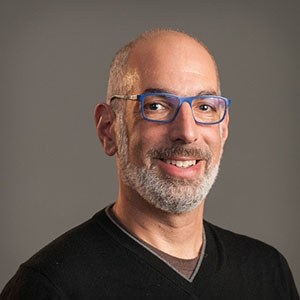 Chip Lesburg received his A.B. in Chemistry from Harvard College in 1991, and a Ph.D. in Biological Chemistry from the University of Pennsylvania in 1997, having trained in the laboratory of Prof. David W. Christianson. There he studied structure-function relationships in mutants of carbonic anhydrase II in collaboration with the laboratory of Prof. Carol Fierke and also kicked off a fruitful collaboration with the laboratory of Prof. David Cane studying sesquiterpene synthases. Employed at the Schering-Plough Research Institute in Kenilworth NJ, he published the first structure of the RNA-dependent RNA polymerase from hepatitis C virus, and subsequently contributed to a series of drug discovery programs as well as structural studies of pregnane X receptor, a common off-target metabolic liability for drug progression. After the acquisition by Merck & Co., he moved in 2013 to the Merck Research Laboratories site in Boston MA to enhance the drug discovery efforts with local structural expertise and has been involved in many programs – mainly concerning oncology and immunology – including identification and optimization of small molecule inhibitors and agonists, as well as peptides and oligonucleotides. After almost a quarter-century in Big Pharma, he moved to a biotech startup called Odyssey Therapeutics as Vice President of Structural Biology. He remains passionate about the development and use of computational tools for the organization and dissemination of macromolecular structural information, from experiment to analysis. From 2005 until 2021, Dr. Lesburg has served on the Supervisory Board (and as Chair from 2007 to 2009) of the Industrial Macromolecular Crystallographic Association, a consortium dedicated to the funding and operation of synchrotron X-ray beamlines to support its membership.
Chip Lesburg received his A.B. in Chemistry from Harvard College in 1991, and a Ph.D. in Biological Chemistry from the University of Pennsylvania in 1997, having trained in the laboratory of Prof. David W. Christianson. There he studied structure-function relationships in mutants of carbonic anhydrase II in collaboration with the laboratory of Prof. Carol Fierke and also kicked off a fruitful collaboration with the laboratory of Prof. David Cane studying sesquiterpene synthases. Employed at the Schering-Plough Research Institute in Kenilworth NJ, he published the first structure of the RNA-dependent RNA polymerase from hepatitis C virus, and subsequently contributed to a series of drug discovery programs as well as structural studies of pregnane X receptor, a common off-target metabolic liability for drug progression. After the acquisition by Merck & Co., he moved in 2013 to the Merck Research Laboratories site in Boston MA to enhance the drug discovery efforts with local structural expertise and has been involved in many programs – mainly concerning oncology and immunology – including identification and optimization of small molecule inhibitors and agonists, as well as peptides and oligonucleotides. After almost a quarter-century in Big Pharma, he moved to a biotech startup called Odyssey Therapeutics as Vice President of Structural Biology. He remains passionate about the development and use of computational tools for the organization and dissemination of macromolecular structural information, from experiment to analysis. From 2005 until 2021, Dr. Lesburg has served on the Supervisory Board (and as Chair from 2007 to 2009) of the Industrial Macromolecular Crystallographic Association, a consortium dedicated to the funding and operation of synchrotron X-ray beamlines to support its membership.
C. OUTEIRAL
University of Oxford, Oxford, UK

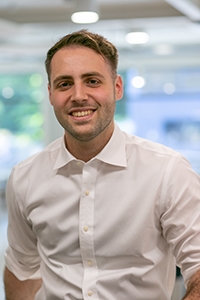 Carlos Outeiral is a research associate at the Department of Statistics of the University of Oxford, and a Stipendiary Lecturer in Biochemistry at St Peter's College, in the same university. Carlos' research develops computational methods for protein engineering, with a focus in machine learning and understanding properties related to protein biosynthesis. He earned his BSc degree in chemistry from the University of Oviedo, in northern Spain, and went on to take a MPhil in chemistry at the University of Manchester, receiving several awards in the process. He then received a PhD in statistics at the University of Oxford, where his doctoral thesis studied algorithms for protein folding, with a focus on emergent computational tools like quantum computing and deep learning.
Carlos Outeiral is a research associate at the Department of Statistics of the University of Oxford, and a Stipendiary Lecturer in Biochemistry at St Peter's College, in the same university. Carlos' research develops computational methods for protein engineering, with a focus in machine learning and understanding properties related to protein biosynthesis. He earned his BSc degree in chemistry from the University of Oviedo, in northern Spain, and went on to take a MPhil in chemistry at the University of Manchester, receiving several awards in the process. He then received a PhD in statistics at the University of Oxford, where his doctoral thesis studied algorithms for protein folding, with a focus on emergent computational tools like quantum computing and deep learning.
J. PETERSEN
AstraZeneca, Goeteborg, SE
Withdrawn March 2023
 Dr. Jens Petersen is an Associate Principal Scientist and structural biologist From Astrazeneca in Gothenburg. He graduated from the University of Copenhagen where he was involved in establishing the first group in X-ray crystallography and carried out structural studies on plant peroxidases. He did his postdoc with Prof Michael N.G. James at the University of Alberta where he carried out studies on viral proteases and protease inhibitors. Since 1999 he has been working within the Structure, Biophysics and Fragments department in Astrazeneca in Gothenburg. He is an expert within structural biology and structure based drug design with specific target class expertise within nuclear hormone receptors, proteases and lipid kinases. He has co-authored more than 30 papers, patents, posters and presentations.
Dr. Jens Petersen is an Associate Principal Scientist and structural biologist From Astrazeneca in Gothenburg. He graduated from the University of Copenhagen where he was involved in establishing the first group in X-ray crystallography and carried out structural studies on plant peroxidases. He did his postdoc with Prof Michael N.G. James at the University of Alberta where he carried out studies on viral proteases and protease inhibitors. Since 1999 he has been working within the Structure, Biophysics and Fragments department in Astrazeneca in Gothenburg. He is an expert within structural biology and structure based drug design with specific target class expertise within nuclear hormone receptors, proteases and lipid kinases. He has co-authored more than 30 papers, patents, posters and presentations.
S. RINIKER
ETH, Zurich, CH

 Sereina Riniker completed her Master’s degree in chemistry at ETH Zurich in 2008. After an internship in the research department of Givaudan AG and a research stay at the University of California Berkeley, she returned in 2009 to ETH Zurich to obtain a PhD in molecular dynamics simulations. From 2012 to 2014, she held a postdoctoral position in cheminformatics at the Novartis Institutes for BioMedical Research in Basel and Cambridge, Massachusetts.
Sereina Riniker completed her Master’s degree in chemistry at ETH Zurich in 2008. After an internship in the research department of Givaudan AG and a research stay at the University of California Berkeley, she returned in 2009 to ETH Zurich to obtain a PhD in molecular dynamics simulations. From 2012 to 2014, she held a postdoctoral position in cheminformatics at the Novartis Institutes for BioMedical Research in Basel and Cambridge, Massachusetts.
Since June 2014, Sereina Riniker is an Assistant Professor (with tenure track) of Computational Chemistry at the Department of Chemistry and Applied Biosciences at ETH Zurich.
A. SHEIKH
AbbVie, Chicago, IL, USA

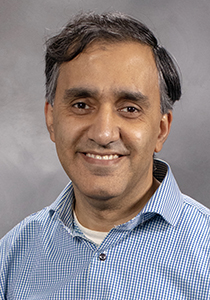 Ahmad Sheikh is Senior Research Fellow and Head of Solid-State and Computational Chemistry at AbbVie. He has over 20 years of pharmaceutical development experience across several Fortune 500 Pharma Companies. At AbbVie, Ahmad has been pivotal in the development and commercialization of a broad range of recently launched medicine including including Viekira, Venclexta, Mavyret, Orilissa and Rinvoq. He earned his B. Eng. and Ph.D. in chemical engineering from the University College London in the UK. He has authored over 35 scientific papers, 3 book chapters and is an inventor on 20 patents.
Ahmad Sheikh is Senior Research Fellow and Head of Solid-State and Computational Chemistry at AbbVie. He has over 20 years of pharmaceutical development experience across several Fortune 500 Pharma Companies. At AbbVie, Ahmad has been pivotal in the development and commercialization of a broad range of recently launched medicine including including Viekira, Venclexta, Mavyret, Orilissa and Rinvoq. He earned his B. Eng. and Ph.D. in chemical engineering from the University College London in the UK. He has authored over 35 scientific papers, 3 book chapters and is an inventor on 20 patents.
M. SHIMPL
AstraZeneca

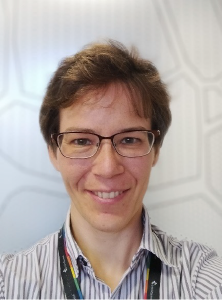 Marianne Schimpl is a structural biologist with expertise in fragment-based drug discovery, structure-guided drug design, target analysis, protein kinases, PARP-family enzymes and protein ubiquitination. In her current role as Associate Principal Scientist at AstraZeneca, she is supporting oncology programmes with structural insights. Marianne studied biotechnology in Austria, Australia and Canada before moving to Scotland for PhD and postdoctoral studies at the University of Dundee. An interest in structural enzymology led to a position in the Drug Discovery Programme at the Beatson Institute for Cancer Research in Glasgow, and then to joining AstraZeneca in 2015. Since then, Marianne is has seen several small molecule drug discovery programmes from hit finding through to clinical evaluation. She has a particular interest in fragment-based lead generation and the application of structural insights in the drug discovery process.
Marianne Schimpl is a structural biologist with expertise in fragment-based drug discovery, structure-guided drug design, target analysis, protein kinases, PARP-family enzymes and protein ubiquitination. In her current role as Associate Principal Scientist at AstraZeneca, she is supporting oncology programmes with structural insights. Marianne studied biotechnology in Austria, Australia and Canada before moving to Scotland for PhD and postdoctoral studies at the University of Dundee. An interest in structural enzymology led to a position in the Drug Discovery Programme at the Beatson Institute for Cancer Research in Glasgow, and then to joining AstraZeneca in 2015. Since then, Marianne is has seen several small molecule drug discovery programmes from hit finding through to clinical evaluation. She has a particular interest in fragment-based lead generation and the application of structural insights in the drug discovery process.
A. VON DELFT
Diamond and Oxford University, UK
G. VERKHIVKER
Chapman University, CA, USA

 Dr. Verkhivker is currently Professor of Computational Biosciences at Schmid College of Science & Technology, Chapman University and Professor at the Department of Biomedical and Pharmaceutical Sciences at Chapman University School of Pharmacy. He is also Adjunct Professor of Pharmacology at the Department of Pharmacology, and Skaggs School of Pharmacy and Pharmaceutical Sciences, UC San Diego. Dr. Verkhivker received his PhD in Physical Chemistry from Moscow State University and completed a postdoctoral fellowship in computational biophysics from University of Illinois at Chicago. In his industrial career, Dr. Verkhivker played a leading role in establishing one of the first structure-based drug design technology platforms and building the largest computational group in pharmaceutical industry at Agouron Pharmaceuticals and Pfizer. He has been Director of Structural Bioinformatics and Structure-Based Drug Design at Pfizer Global Research and Development, La Jolla Laboratories. Dr. Verkhivker has led computational biology and structure-based drug design groups at Pfizer in discovering the first FDA-approved personalized cancer agent Xalkori. Since 2002, he has been Adjunct Professor of Pharmacology at the Skaggs School of Pharmacy and Pharmaceutical Sciences, UC San Diego. In 2006 he joined School of Pharmacy and Center for Bioinformatics at The University of Kansas as a Full Professor of Pharmaceutical Chemistry and Bioinformatics. In 2011 Dr. Verkhivker assumed position of Full Professor of Computational Biosciences at Schmid College of Science & Technology and Professor of Biomedical and Pharmaceutical Sciences at Chapman University School of Pharmacy in Irvine, CA. He is a founding member of the Structural Biology Center at the Chapman University School of Pharmacy and member of Chao Family Comprehensive Cancer Center , University of California Irvine. Dr. Verkhivker authored more than 150 peer reviewed publications and is recognized for his research contributions in the fields of bioinformatics, computational biophysics, computational biology and drug discovery. His most recent research activities are in the areas of computational systems biology, translational bioinformatics, network science and artificial intelligence with the focus on application of these approaches in translational cancer research. His research groups are involved in multidisciplinary studies that combine structural and computational biology with machine learning and artificial intelligence technologies to dissect molecular mechanisms and develop novel strategies for discovery of allosteric modulators of therapeutically important families of protein kinases and molecular chaperones. The innovative computational approaches developed by Prof. Verkhivker and his group allow for rational engineering of novel functions and design of selective kinase inhibitors. He is an Associated Editor of International Journal of Molecular Sciences and Frontiers in Molecular Biosciences, and a member of Advisory Boards of several biotech companies.
Dr. Verkhivker is currently Professor of Computational Biosciences at Schmid College of Science & Technology, Chapman University and Professor at the Department of Biomedical and Pharmaceutical Sciences at Chapman University School of Pharmacy. He is also Adjunct Professor of Pharmacology at the Department of Pharmacology, and Skaggs School of Pharmacy and Pharmaceutical Sciences, UC San Diego. Dr. Verkhivker received his PhD in Physical Chemistry from Moscow State University and completed a postdoctoral fellowship in computational biophysics from University of Illinois at Chicago. In his industrial career, Dr. Verkhivker played a leading role in establishing one of the first structure-based drug design technology platforms and building the largest computational group in pharmaceutical industry at Agouron Pharmaceuticals and Pfizer. He has been Director of Structural Bioinformatics and Structure-Based Drug Design at Pfizer Global Research and Development, La Jolla Laboratories. Dr. Verkhivker has led computational biology and structure-based drug design groups at Pfizer in discovering the first FDA-approved personalized cancer agent Xalkori. Since 2002, he has been Adjunct Professor of Pharmacology at the Skaggs School of Pharmacy and Pharmaceutical Sciences, UC San Diego. In 2006 he joined School of Pharmacy and Center for Bioinformatics at The University of Kansas as a Full Professor of Pharmaceutical Chemistry and Bioinformatics. In 2011 Dr. Verkhivker assumed position of Full Professor of Computational Biosciences at Schmid College of Science & Technology and Professor of Biomedical and Pharmaceutical Sciences at Chapman University School of Pharmacy in Irvine, CA. He is a founding member of the Structural Biology Center at the Chapman University School of Pharmacy and member of Chao Family Comprehensive Cancer Center , University of California Irvine. Dr. Verkhivker authored more than 150 peer reviewed publications and is recognized for his research contributions in the fields of bioinformatics, computational biophysics, computational biology and drug discovery. His most recent research activities are in the areas of computational systems biology, translational bioinformatics, network science and artificial intelligence with the focus on application of these approaches in translational cancer research. His research groups are involved in multidisciplinary studies that combine structural and computational biology with machine learning and artificial intelligence technologies to dissect molecular mechanisms and develop novel strategies for discovery of allosteric modulators of therapeutically important families of protein kinases and molecular chaperones. The innovative computational approaches developed by Prof. Verkhivker and his group allow for rational engineering of novel functions and design of selective kinase inhibitors. He is an Associated Editor of International Journal of Molecular Sciences and Frontiers in Molecular Biosciences, and a member of Advisory Boards of several biotech companies.
R. WADE
HITS and Heidelberg University, DE

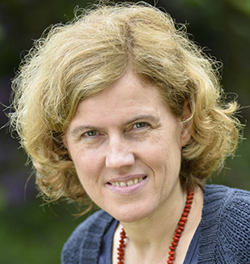 Rebecca Wade leads the Molecular and Cellular Modeling group at Heidelberg Institute for Theoretical Studies (HITS) and is Professor of Computational Structural Biology at the Center for Molecular Biology at Heidelberg University (ZMBH). Rebecca Wade studied at Oxford University and, following postdoctoral research at the universities of Houston and Illinois, became a group leader at the European Molecular Biology Laboratory (EMBL) in Heidelberg in 1992. She moved to HITS in 2001. Rebecca Wade’s research is focused on the development and application of computer-aided methods to model and simulate biomolecular interactions. Her research group has developed novel protein structure-based methods for drug discovery and protein engineering, most recently for studying drug binding kinetics, as well as multiresolution computational approaches to investigate macromolecular association and the effects of macromolecular crowding. Rebecca Wade’s research has been published in over 250 scientific papers, as well as software programs and web servers that are used world-wide. She is an Associate Editor of the Journal of Molecular Recognition and PloS Computational Biology. She was the recipient of the 2004 Hansch Award of the QSAR and Modelling Society and the 2016 International Society of Quantum Biology and Pharmacology (ISQBP) Award in Computational Biology. URL: www.h-its.org/mcm
Rebecca Wade leads the Molecular and Cellular Modeling group at Heidelberg Institute for Theoretical Studies (HITS) and is Professor of Computational Structural Biology at the Center for Molecular Biology at Heidelberg University (ZMBH). Rebecca Wade studied at Oxford University and, following postdoctoral research at the universities of Houston and Illinois, became a group leader at the European Molecular Biology Laboratory (EMBL) in Heidelberg in 1992. She moved to HITS in 2001. Rebecca Wade’s research is focused on the development and application of computer-aided methods to model and simulate biomolecular interactions. Her research group has developed novel protein structure-based methods for drug discovery and protein engineering, most recently for studying drug binding kinetics, as well as multiresolution computational approaches to investigate macromolecular association and the effects of macromolecular crowding. Rebecca Wade’s research has been published in over 250 scientific papers, as well as software programs and web servers that are used world-wide. She is an Associate Editor of the Journal of Molecular Recognition and PloS Computational Biology. She was the recipient of the 2004 Hansch Award of the QSAR and Modelling Society and the 2016 International Society of Quantum Biology and Pharmacology (ISQBP) Award in Computational Biology. URL: www.h-its.org/mcm
J. WILLIAMS
City of Hope, Duarte, CA, USA

 John Williams is a Professor of Molecular Medicine and the co-Director of the Drug Discovery and Structural Biology program at Beckman Research Instittue at City of Hope. His thesis work, application of solid state NMR to study protein dynamics, was conducted at Columbia University under the supervision of Professor Ann McDermott. He studied X-ray diffraction at EMBL Heidelberg as an Alexander von Humboldt scholar under the direction of Rik Wierenga. He continued his postdoctoral studies at Columbia Presbyterian Medical College under the supervision of Professor Wayne Hendrickson. He applied structural and biophysical methods to understand the regulation of the dynein motor complex (while an Asst. Professor at Thomas Jefferson University) before relocating to City of Hope. Currently, his lab uses structural methods to design and functionalize antibodies and biologics. These efforts also involve the application of diffraction methods to discover small molecules to improve affinity thorough avidity and/or regulate activity. The result of these efforts have led to multiple, pending and issued patents and two spin out biotech companies. Finally, as a co-director of the Drug Discovery and Structural Biology program, Dr. Williams and his team are deeply involved in obtaining structure information as part of an institution wide medicinal chemistry effort.
John Williams is a Professor of Molecular Medicine and the co-Director of the Drug Discovery and Structural Biology program at Beckman Research Instittue at City of Hope. His thesis work, application of solid state NMR to study protein dynamics, was conducted at Columbia University under the supervision of Professor Ann McDermott. He studied X-ray diffraction at EMBL Heidelberg as an Alexander von Humboldt scholar under the direction of Rik Wierenga. He continued his postdoctoral studies at Columbia Presbyterian Medical College under the supervision of Professor Wayne Hendrickson. He applied structural and biophysical methods to understand the regulation of the dynein motor complex (while an Asst. Professor at Thomas Jefferson University) before relocating to City of Hope. Currently, his lab uses structural methods to design and functionalize antibodies and biologics. These efforts also involve the application of diffraction methods to discover small molecules to improve affinity thorough avidity and/or regulate activity. The result of these efforts have led to multiple, pending and issued patents and two spin out biotech companies. Finally, as a co-director of the Drug Discovery and Structural Biology program, Dr. Williams and his team are deeply involved in obtaining structure information as part of an institution wide medicinal chemistry effort.
 Giovanna Scapin graduated magna cum laude in 1985 from the University of Padua (Italy) with a degree in Organic Chemistry. In 1989 she received her PhD in Organic Chemistry from the same university with a thesis on Structural Biology. In February 1990, Giovanna joined the laboratory of Dr. James C. Sacchettini at the Albert Einstein College of Medicine, Bronx (NY) as a postdoctoral fellow and subsequently as Instructor. Her interest initially focused on a class of small fatty acid binding proteins that had been related to obesity and diabetes. Subsequently, most of her work involved bacterial enzymes that could be used as targets for the design of novel antibiotics. During the 6 years Giovanna spent at Albert Einstein she mentored several graduate students and post-doctoral fellows.
In 1997 Giovanna joined Merck and Co., Inc, where she was involved in several drug discovery projects, providing structural biology support for diabetes, inflammation and oncology targets. Her more recent work focused on the diabetes target DPP-4, on novel antimicrobial targets, and on the structure-function of antibodies. After 18 months as an embedded scientist at the New York Structural Biology Center – Simons Electron Microscopy Center, to learn single particle CryoEM hands-on, Giovanna went back to Merck full time, where she established a new cryoEM facility starting in 2018.
Giovanna Scapin graduated magna cum laude in 1985 from the University of Padua (Italy) with a degree in Organic Chemistry. In 1989 she received her PhD in Organic Chemistry from the same university with a thesis on Structural Biology. In February 1990, Giovanna joined the laboratory of Dr. James C. Sacchettini at the Albert Einstein College of Medicine, Bronx (NY) as a postdoctoral fellow and subsequently as Instructor. Her interest initially focused on a class of small fatty acid binding proteins that had been related to obesity and diabetes. Subsequently, most of her work involved bacterial enzymes that could be used as targets for the design of novel antibiotics. During the 6 years Giovanna spent at Albert Einstein she mentored several graduate students and post-doctoral fellows.
In 1997 Giovanna joined Merck and Co., Inc, where she was involved in several drug discovery projects, providing structural biology support for diabetes, inflammation and oncology targets. Her more recent work focused on the diabetes target DPP-4, on novel antimicrobial targets, and on the structure-function of antibodies. After 18 months as an embedded scientist at the New York Structural Biology Center – Simons Electron Microscopy Center, to learn single particle CryoEM hands-on, Giovanna went back to Merck full time, where she established a new cryoEM facility starting in 2018.
In March 2020, Giovanna joined NanoImaging Services as Chief Scientist of the newly established NIS-East Client Center in Woburn, MA, where she is currently CSO.
Publication list: here
LinkedIn profile: here
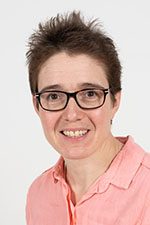 Charlotte Deane is Professor of Structural Bioinformatics in the Department of Statistics at the University of Oxford. She did her undergraduate degree at University College, Oxford and received her PhD from the University of Cambridge. She then moved to UCLA on a Wellcome Trust Research Fellowship and took up a group leader position in Oxford in 2002. Since then she has set up and directed an MSc programme as well as two Centres for Doctoral Training. She is currently the director of the Sustainable Approaches to Biomedical Sciences Centre for Doctoral training. This is an open innovation EPSRC/MRC and industry funded centre, with over twenty partner companies.
Charlotte Deane is Professor of Structural Bioinformatics in the Department of Statistics at the University of Oxford. She did her undergraduate degree at University College, Oxford and received her PhD from the University of Cambridge. She then moved to UCLA on a Wellcome Trust Research Fellowship and took up a group leader position in Oxford in 2002. Since then she has set up and directed an MSc programme as well as two Centres for Doctoral Training. She is currently the director of the Sustainable Approaches to Biomedical Sciences Centre for Doctoral training. This is an open innovation EPSRC/MRC and industry funded centre, with over twenty partner companies.
Charlotte also leads the Oxford Protein Informatics group, a research group of over 20 people working on diverse problems across protein structure, immunoinformatics, interaction networks and small molecule drug discovery. Her work combines both theoretical and empirical analysis with special interests in artificial intelligence. This involves close collaborations with experimentalists in both academia and industry in the design of experiments to leverage the power of computation for biological insight.
Her work focusses on the development of novel algorithms, tools and databases all of which are openly available to the community. Examples include SAbDab, SAbPred, PanDDA and MEMOIR. These tools are widely used web resources (SAbDab alone has over 500 unique users a month) and are also part of several Pharma drug discovery pipelines, including GSK, Roche, Medimmune, Kymab, Iontas, Lonza and UCB.
Website: opig.stats.ox.ac.uk
 Frank von Delft is Professor of Structural Chemical Biology at the University of Oxford, where he heads the Protein Crystallography group of the Structural Genomics Consortium; and Principal Beamline Scientist at Diamond Light Source, head of the I04-1 experimental station and the associated XChem programme for fragment screening. He is also Visiting Professor at the Department of Biochemistry at the University of Johannesburg. After studying biochemistry, chemistry and applied mathematics in Bloemfontein, South Africa, he completed his PhD in crystallography at Cambridge under Tom Blundell, followed by postdoctoral work in high-throughput crystallography at the JCSG in San Diego at the Scripps Institute, as well as Syrrx, Inc.
Frank von Delft is Professor of Structural Chemical Biology at the University of Oxford, where he heads the Protein Crystallography group of the Structural Genomics Consortium; and Principal Beamline Scientist at Diamond Light Source, head of the I04-1 experimental station and the associated XChem programme for fragment screening. He is also Visiting Professor at the Department of Biochemistry at the University of Johannesburg. After studying biochemistry, chemistry and applied mathematics in Bloemfontein, South Africa, he completed his PhD in crystallography at Cambridge under Tom Blundell, followed by postdoctoral work in high-throughput crystallography at the JCSG in San Diego at the Scripps Institute, as well as Syrrx, Inc.
As structural biologist, he is seeking to reshape how protein structure determination transforms rational drug design, by developing and making the new methodologies and tools available through platforms and products to ensure they are widely and routinely used by researchers world-wide. His long-term programme is to shrink by two orders of magnitude the time and cost required to develop small molecule inhibitors, by combining national facilities, artificial intelligence, robotics and cloud-based open access science, in order to make the bespoke design of inhibitors a consistently cheap, fast and widely-used approach in biology and medicine.
He leads three research facilities that serve large user communities, are critical to multiple large, international research networks, and provide the outlet for wide-spread use of my methodologies. At Oxford for the Structural Genomics Consortium (SGC), he run the crystallography infrastructure that serves 100s of researchers. At Diamond Light Source, beamline I04-1 is used by at least 100 crystallography groups annually, and the world-first XChem facility seeds 30 academic and industrial drug discovery experiments annually with high-quality data. He has authored or co-authored over 100 publications, and he is co-applicant on several large international initiatives totalling over £70m.